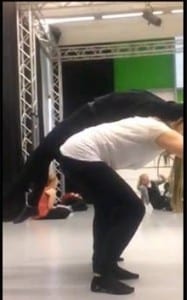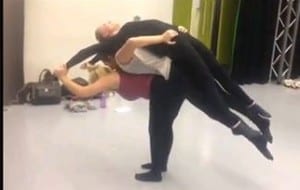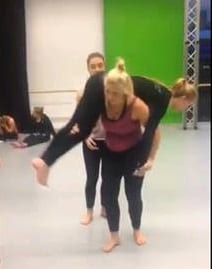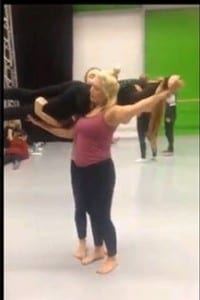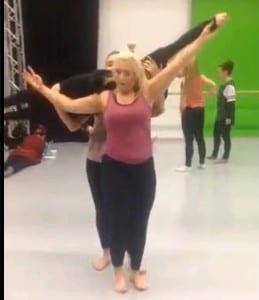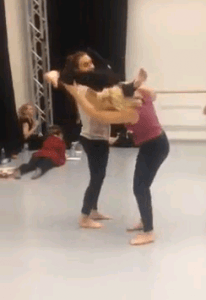Week Eight 17/11/2014 Contact Research Lab
This week’s class was devised into another contact research lab. The question that my group explored was:
‘Is it possible to do lifts with the same intention and fluidity in trios that it is in duets?’
As a group we decided to explore this question because from our own experiences when taking part in contact improvisation lifts normally only occur between two people. We wanted to explore this further by seeing what possibilities there are to incorporate more people into contact lifts, without leaving other dancers as a spare part. Our lab mapped out into experimenting with lifts that we have previously done in duets but developing and adapting them further to integrate a third person, what’s more after this experimentation we created a jam session to incorporate our findings into a contact improvisation dance.
The lifts that we investigated are as follows:
- Back to back (back bend)
- Crucifix
- Hip to hip
To start our research we began with the back to back lift. Our first attempt at trying this lift as trio began with having two dancers as a base rather than one. (Picture 1). It was important that both bases were positioned similarly with their pelvis at equal heights. I was the over dancer being lifted over the backs, at first it felt uncomfortable as the bases were uneven however when they altered their position it became easier. Furthermore when I became one of the bases I found it awkward in holding the over dancers arm to take their weight over my back, the way in which I supported them was uncomfortable for me. We found this attempt in some ways successful but overall found it relatively uncomfortable to perform. Our second attempt at this lift consisted of performing the back to back the original way with one person lifting the weight. However to transform this into a trio the under dancer original taking the weight of the back also became an over dancer by transferring their weight onto a third person. (Picture 2). This lift was successful although the third dancer taking weight of both people had to ensure a strong and stable base.
After investigating the back to back lift we moved onto the crucifix. The crucifix originated from the jump back with hands under the shoulder blades giving support. We developed this by keeping the support of the shoulder blades but adding in a third person to support the weight of the legs. As the person being lifted, I jumped back into the support of the hands under my shoulder blades but was then lifted higher by the person supporting my legs. As a trio this lift was effective, yet we struggled with bringing the lift down. The transition down from the lift was relativity clumpy preventing a flow of movement into another lift.
Our final lift adapted from the hip to hip lift from our previous class. Unlike the original way of supporting the weight from the hips we altered this to take the weight at the shoulders. (Picture 3). Once the under dancer felt steady they shifted and extended the weight of the over dance onto their shoulder in a higher position. (Picture 4). Once in this position to incorporate a third person into the lift the weight of the over dancer was transferred to the other person. (Picture 5). In my opinion this lift was very successful as if flowed from one lifter to the next with smooth transitions of the over dancer going up and coming back down. This lift differed from the last variations that we explored as it did not involve two dancers lifting one but allowed for the weight to be passed over.
After experimenting with the different lifts we created a small jam session to explore our findings. During the first attempt it was obvious that as soon as contact occurred between two dancers the third person instantly supported with their arms, specifically holding the legs. This motion restricted the movement as the over dancer had no where to go making the contact lifts become stiff and clumpy. After this attempt we tried again bringing an awareness to the previous factors that hinder the contact. What’s more instead of using the arms for support we tried to use different body parts such as the back, shoulders and head. (Picture 6). Offering different body for support created more options and allowed for my interesting contact to take place.
From our research lab four questions arose:
- Can you fluidly interchange the role of who is the lifter and who is being lifted?
- How can you pass on the weight of the over dancer from one person to next?
- How can you explore contact in trios without resorting to supporting the legs and using the arms?
- How can trio lifts start from the floor and move upwards and travel across the space?
If we were to develop our research lab further these questions would be integrated and investigated in more depth.
Works Cited
Keefe, M. What’s the score? Improvisation in Everyday Life. In Albright, A. C., & Gere, D. (2003).Taken by surprise: A dance improvisation reader. Middletown, Conneticut: Wesleyan University Press. Pp.229-238
